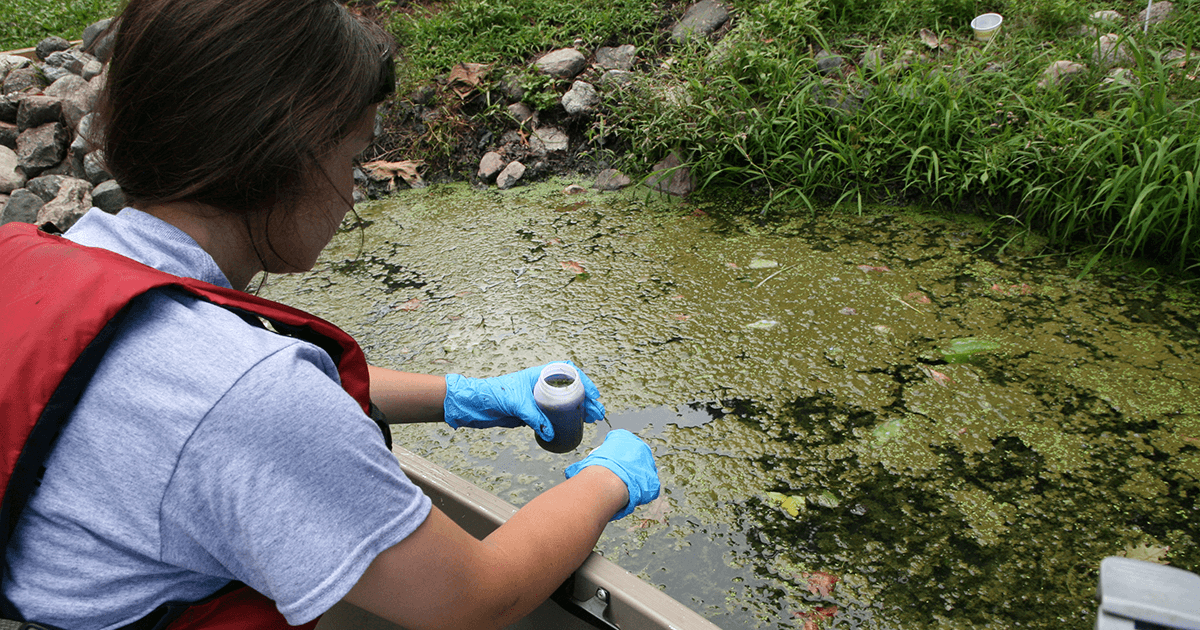Dust in the wind (spreads toxic algae)
Algae blooms in lakes can be toxic to humans, pets and wildlife. (Photo by Minnesota Pollution Control Agency)
We love our lakes. For some Minnesotans, nothing beats hitting the water on a jet ski or pontoon, a canoe or a kayak. Others fish the peaceful, clear waters of a smaller lake ringed by pines. Whether we treasure them for fishing, boating, swimming or just tossing a frisbee for our dog to splash after, the one thing we all want our lakes to be is clean.
Unfortunately, even our most remote lakes are suffering from the rapid growth of certain kinds of algae, called cyanobacteria, that can be toxic to people and animals. As we reported back in May, Minneapolis residents got hit with a triple whammy of metro lake closures necessitated by such toxic algae "blooms."
Algae feed off nutrients commonly found in fertilizer and untreated runoff from urban and suburban areas. You'd expect that the farther you travel from the city or developed cropland, waterways would be less polluted with those nutrients and therefore less prone to algae blooms.
But in recent years scientists have noticed these blooms occurring in lakes in remote parts of the state, far from any obvious source of fertilizer or wastewater. These findings are perplexing and troubling because algae run amok can seriously damage the native ecosystem.
What's the source of these algae blooms in remote waters?
The probable cause is twofold: Warming waters combined with airborne dust particles.
Reports the Star Tribune: "A warming climate is certainly one of the culprits, [researcher Mark Edlund] said. With less ice cover and longer growing seasons, the conditions are better for the growth of the bacteria that causes the blooms. There is also mounting evidence that winds pick up pollution and nutrients from even the smallest fragments of dust and soil and drop them onto every part of the region, even the inland waters of Isle Royale. Those nutrients, which could be coming from across the continent, are changing the very makeup of life within the waters."
There's no quick and easy fix that can get our pristine lakes back to their healthy natural state, though addressing climate change and reducing agricultural pollution — two of FMR's key priorities — are the big picture solutions. For now, scientists watch and learn.
Ready to make a difference?
Sign up to be a River Guardian so you can take action when threats to the river arise. And keep an eye on the water blog for more news on water quality.
